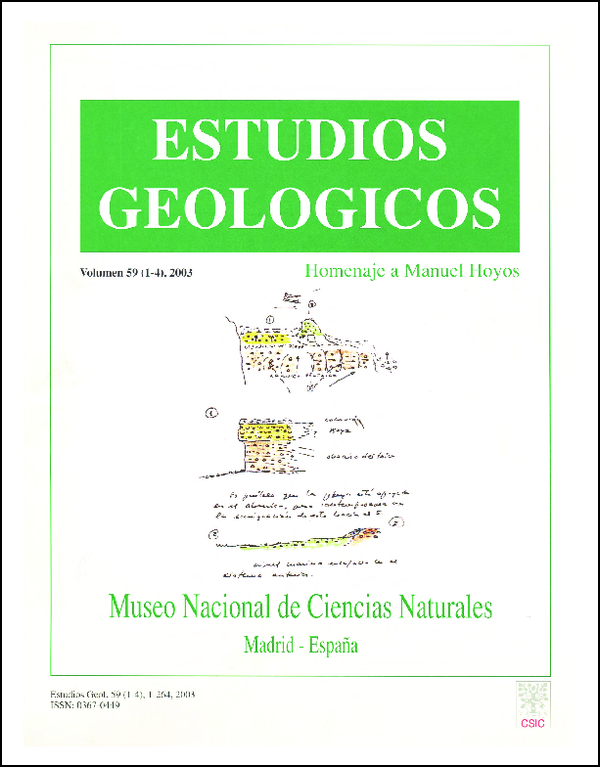Rasgos morfologicos y petrologicos del paleokarst de la unidad superior del mioceno de la cuenca de Madrid
DOI:
https://doi.org/10.3989/egeol.03591-484Keywords:
paleokarst, continental limestones, Neogene, Madrid BasinAbstract
In the Madrid Basin, especially in the Southem part (Mesa de Ocaña), the Miocene- Pliocene stratigraphic boundary is defined by a paleokarst sculpted on the Miocene limestones. The development of the paleokarst was completed in three main successive stages. The first one was initiated when the lacustrine sedimentary complex, settled in the basin during the Turolian, dried out. Although the water table dropped, it was still close to the surface, as indicated by the location of sub-horizontal caves in the limestone formation. The proximity of the water table favored an encroachment of vegetation into the unlithified sediment. Conduits related to the plant roots, together with the horizontal caves, represent the most prominent dissolution features of the resulting «uncovered» karst. The second stage of karstification took place after the limestones folded. It was characterized by the formation of calcretes, which exhibit typical fabrics (laminar, pisoliths, etc.), on the previous profiles, providing evidence of a dry climatic stage. Karstic profiles scovered by calcretes~w ere buried by a Pliocene river system. In the south zone of the Mesa de Ocaña, far away of the fluvial complex, a third episode of karstification has been verified. This episode is defined by the accumulation of soils, basically in the synclines, which caused the dissolution and brecciation of the substrate, as it is reflected in a third type of profiles, called «brechoides». These features are consistent with a humid climate. Finally, al1 types of karst were buried by a laminar calcrete formed at the latest Pliocene. Therefore, the polyphase development of the paleokarstic surface lasted almost al1 the Pliocene. Nevertheless, figures on the order of lo5 years are envisaged as reliable to assess the duration of the first phase, the only one evenly affecting the limestone formations.
Downloads
Downloads
Published
How to Cite
Issue
Section
License
Copyright (c) 2003 Consejo Superior de Investigaciones Científicas (CSIC)

This work is licensed under a Creative Commons Attribution 4.0 International License.
© CSIC. Manuscripts published in both the print and online versions of this journal are the property of the Consejo Superior de Investigaciones Científicas, and quoting this source is a requirement for any partial or full reproduction.
All contents of this electronic edition, except where otherwise noted, are distributed under a Creative Commons Attribution 4.0 International (CC BY 4.0) licence. You may read the basic information and the legal text of the licence. The indication of the CC BY 4.0 licence must be expressly stated in this way when necessary.
Self-archiving in repositories, personal webpages or similar, of any version other than the final version of the work produced by the publisher, is not allowed.















